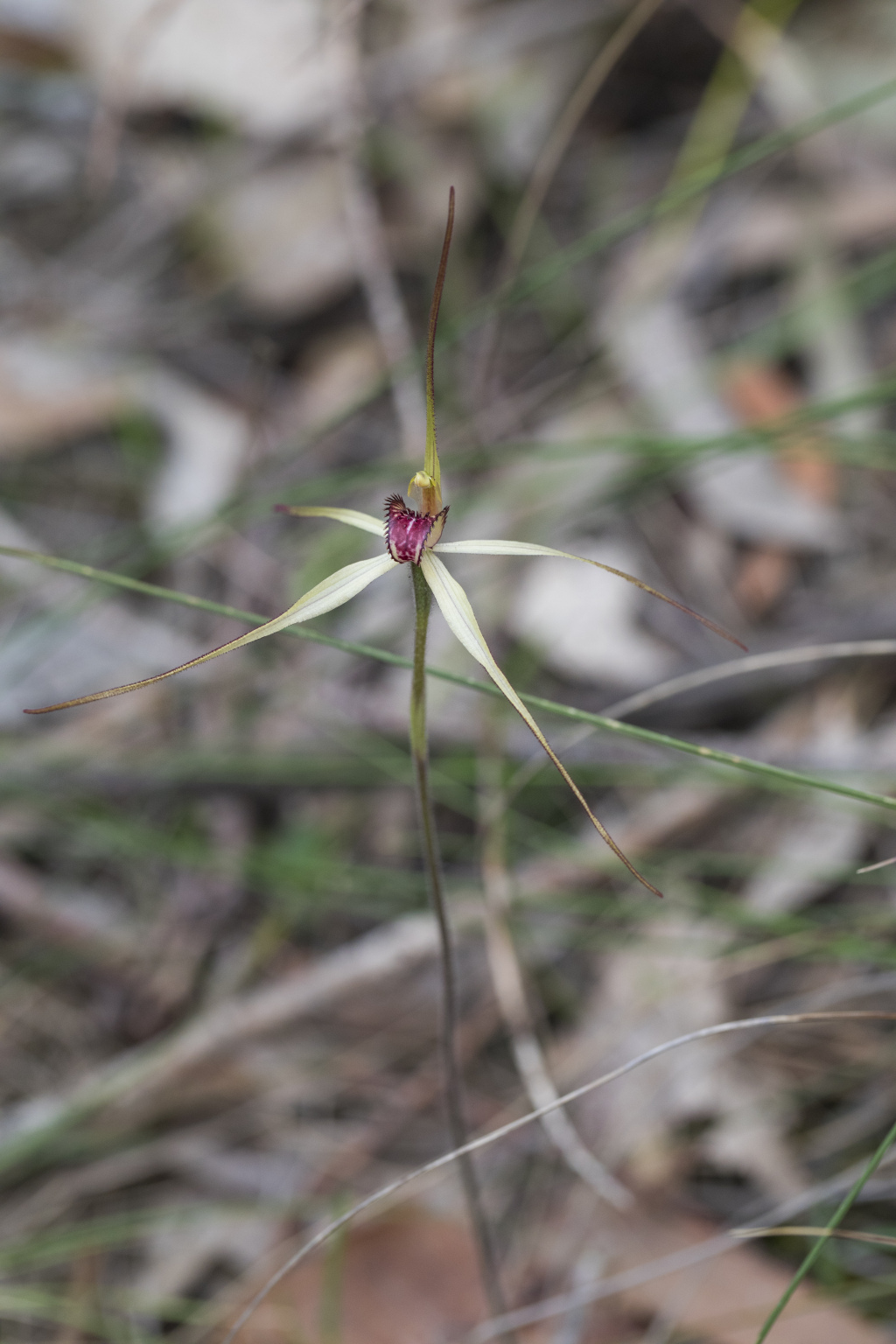Caladenia oenochila
G.W.CarrFlowering plant 20–40 cm tall. Leaf 7–12 cm long, 8–12 mm wide. Flower usually solitary, sometimes 2; perianth segments 3.5–5.5 cm long, pale yellow-green with purple infusions or stripes and dark glandular tips; sepals flattened at base, 2–5 mm wide, abruptly tapered to a long tail densely covered in crowded, sessile glands, sometimes differentiated into thickened clubs; petals shorter than sepals but otherwise similar. Labellum curved forward with apex recurved and lateral lobes erect, lamina ovate-cordate, 3-lobed, 12–15 mm long and 9–11 mm wide (when flattened), deep red or pale yellow-green with deep red margins and calli, mid-lobe often wine-red; margins of lateral lobes fringed with linear calli to 2.5 mm long; margins of mid-lobe with shorter, foot-like calli becoming tooth-like near tip; lamina calli in 4 or 6 rows, usually extending onto base of mid-lobe, narrow, foot-shaped, c. 1.2 mm long at base of lamina, decreasing in size towards apex. Flowers Aug.–Oct.
GipP, OtP, Gold, CVU, GGr, WPro, HSF, HNF. Endemic to Victoria where mostly known from the foothills immediately east of Melbourne, but sporadically distributed from Yarram through to Ararat. Relatively common in moist, often grassy forest or woodland, often in shaded habitats.
Flowering can be enhanced dramatically by summer fires.
Hybrids between Caladenia oenochila and a species from the C. dilatata group are known from near Officer.
Entwisle, T.J. (1994). Orchidaceae. In: Walsh, N.G.; Entwisle, T.J., Flora of Victoria Vol. 2, Ferns and Allied Plants, Conifers and Monocotyledons, pp. 740–901. Inkata Press, Melbourne.
 Spinning
Spinning
